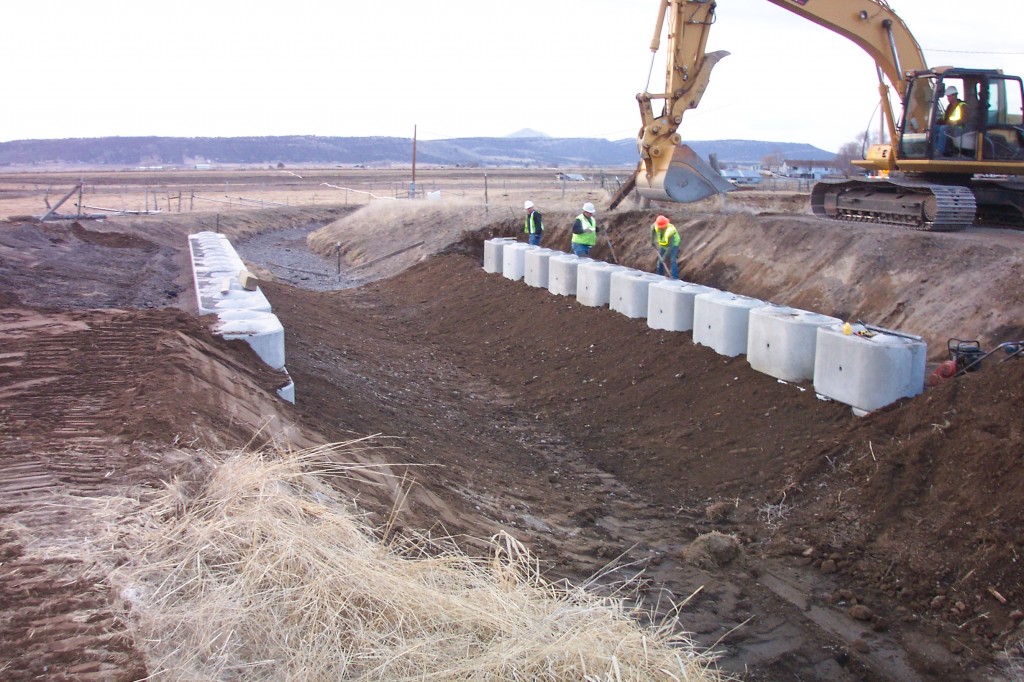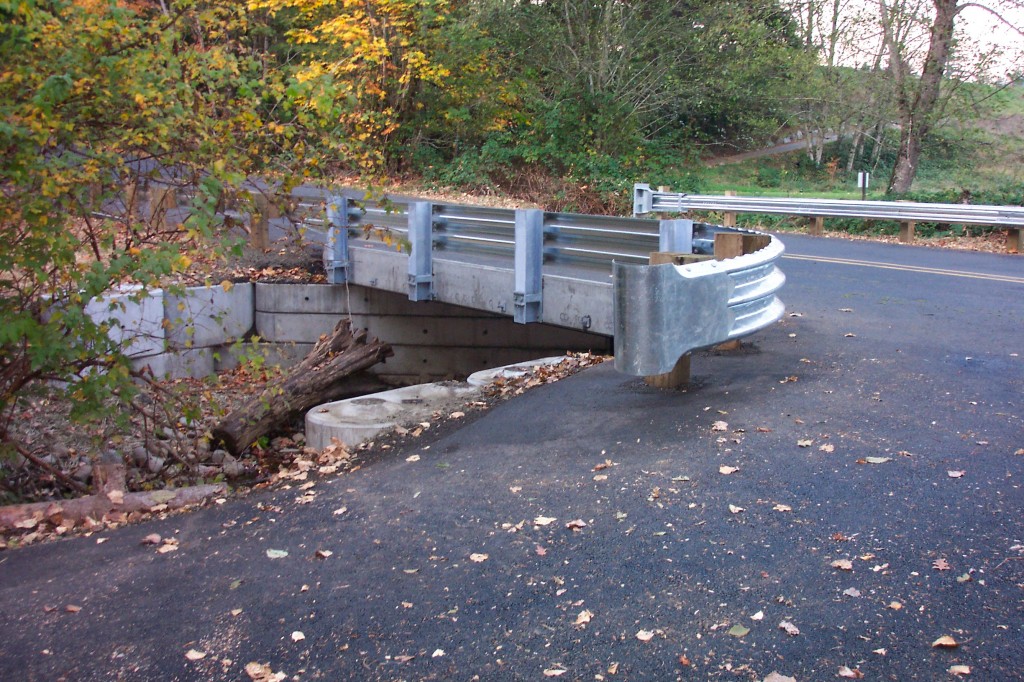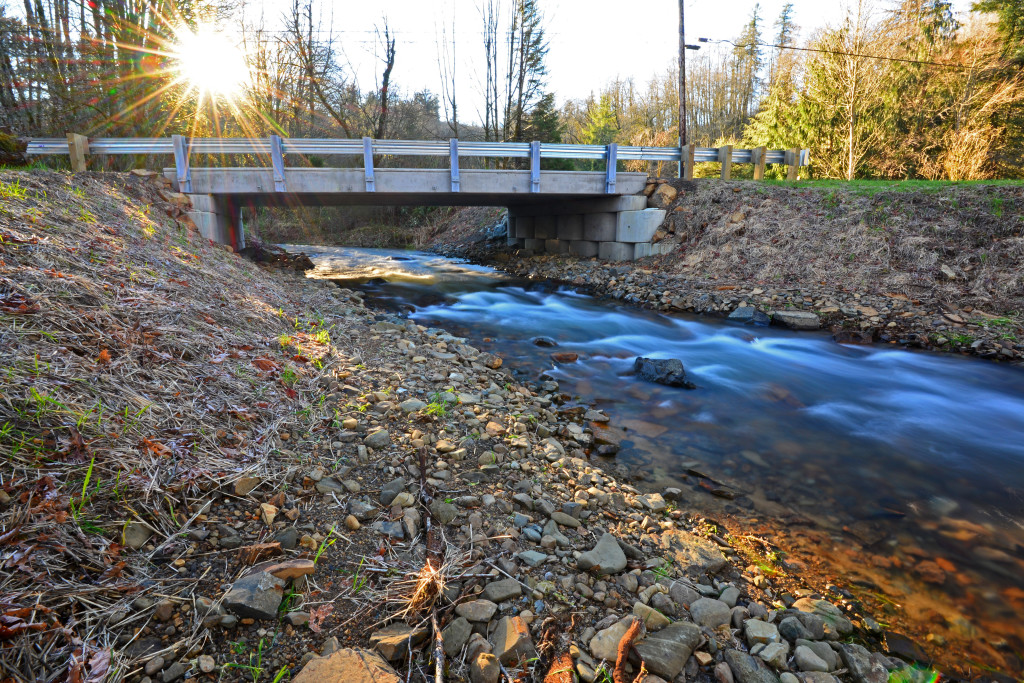
Wild Coho salmon have already endorsed a Sandy company’s innovative bridge design. The father-and-son team behind the environmentally friendly structures hopes human approval will follow as well.
Pacific Bridge and Construction’s Steve and Gene Copher got a shot at proving their design to government agencies with the October completion of Wee Burn Bridge. Clackamas County, the USDA Forest Service and a Mt. Hood resort collaborated to eliminate a serious fish passage barrier along Wee burn Creek in Welches.
When Ed Hopper bought the Resort at the Mountain 17 years ago, he heard tales of wee Burn Creek’s former glory as a salmon spawning ground. The creek, which connects with the Salmon River, had been neglected over the years, but Hopper heard stories of wading during spawning season and being able to scoop out fish by hand.
“We felt like it was the right thing to do, to try and restore it,” Hopper said, “About 11 years ago, we began to attack it very seriously.”
In 1995, the project began with restoration of the Wee Burn as it snakes through the resort’s Three Nines golf course. That effort, Hopper said, brought the stream closer to what it had been so many years ago.
“It was instant success,” he said. “It’s almost as if the fish were out there waiting.”
The current Wee Burn Fish Passage Enhancement Project was aimed at both fish and humans. During heavy rains, the metal culverts overflowed and flooded the road, making driving hazardous. During periods of low water, the culvert flow prevented fish passage.
Correcting the problem is where the Cophers come in.
In 2001, their company built a small wooden stream bridge for John Belton, who owns a 200-acre tree farm five miles east of Sandy. The open stream bottom design intrigued visitors, and in 2002, with the help of Portland Firm Structural Systems Consulting Engineers, the Cophers came up with the precast concrete system.
“Wood’s not permanent – it rots,” Steve Copher said, “But we thought if we could design something out of concrete, then that would be permanent.”
Using precast concrete also has environment saving and timesaving – benefits. Because the “Lego-like” interlocking bridge pieces as Copher described them, are assembled without pouring concrete, the chemical impacts of concrete curing on site are eliminated. And because the pre-cast pieces are easy to assemble, Copher said, going from culvert excavation to final bridge typically takes about a week.
“That’s what the county agencies really like, because they don’t have the public calling, wanting to know when the road’s going to reopen,” Copher said.
Low cost is another thing the government agencies like. The bridges are designed to be installable with only an excavator, cut ting out the need for crane rental. Copher estimates that using the design on the Wee Burn project saved Clackamas County about $50,000.
Wild Coho salmon approve. In November, just 60 days after the project wrapped, Forest Service staff spotted two fish nests, or redds, on either end of the bridge, as well as four adult fish. According to the Forest Service, the creek and its adjacent pond are capable of 700 to 2,900 smolts annually.
Under favorable stream conditions, the number of smolts could double or triple. Copher hopes the bridge design will be popular with regional and state governments as well as fish.
The Cophers have installed about 15 of the bridges, most for private home- and landowners, but the project was funded by Clackamas County and an $85,000 grant from the Oregon Watershed Enhancement Board. The Wee Burn project is the company’s first with a government agency, and a three-bridge installation is currently under way for Crook County in Prineville. Work on county, state and forest service projects, Copher said, is the direction they want to take.
“People want to see a proven design,” he said, “and this project has allowed us to prove our product.”
Up next, Hopper said, is enhancement of an existing side channel and correction of bank erosion along the Salmon River, and he’s actively pursuing funding for the effort. Some of the side channel restoration will take place this summer, he said, with the mainstream work expected to go off in summer 2007. “They had really wrecked the Wee Burn over the years,” Hopper said. “We simply brought it back.”






